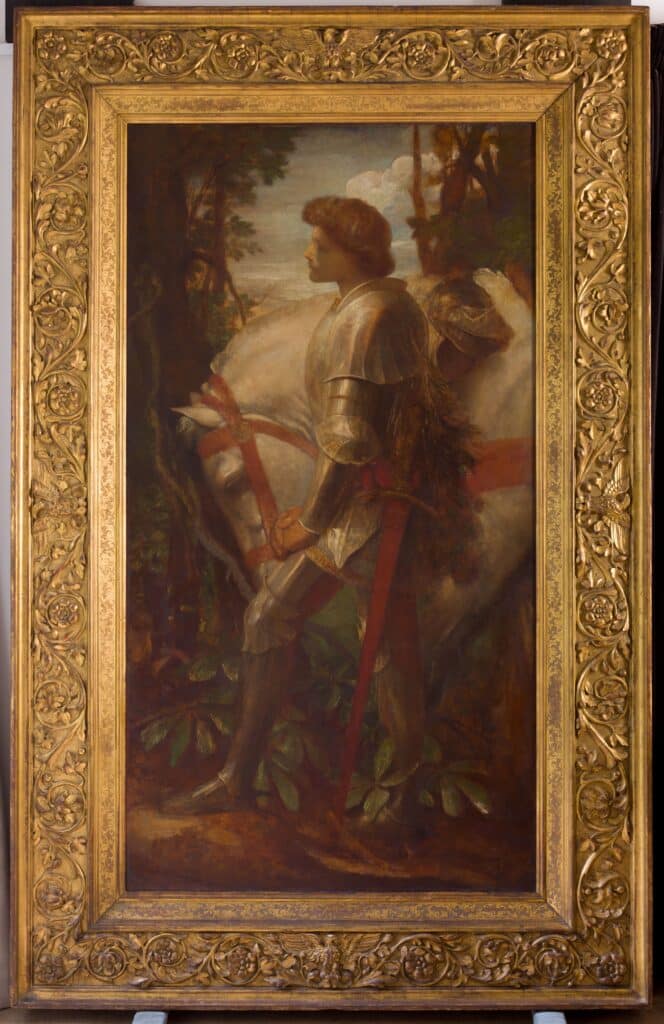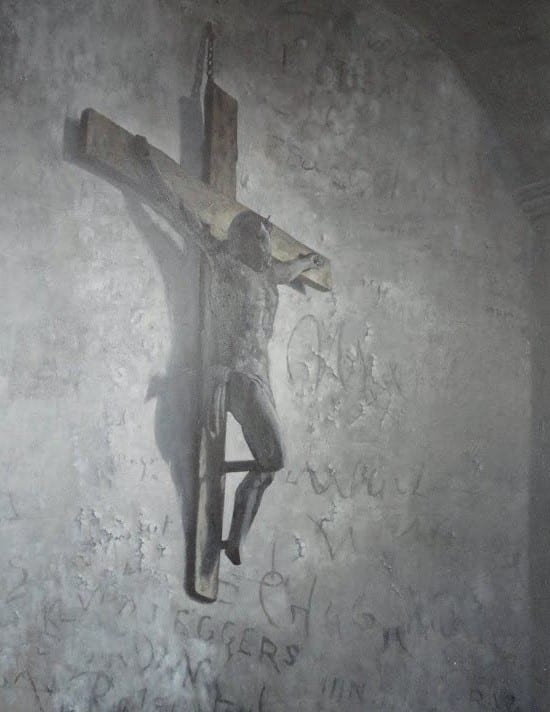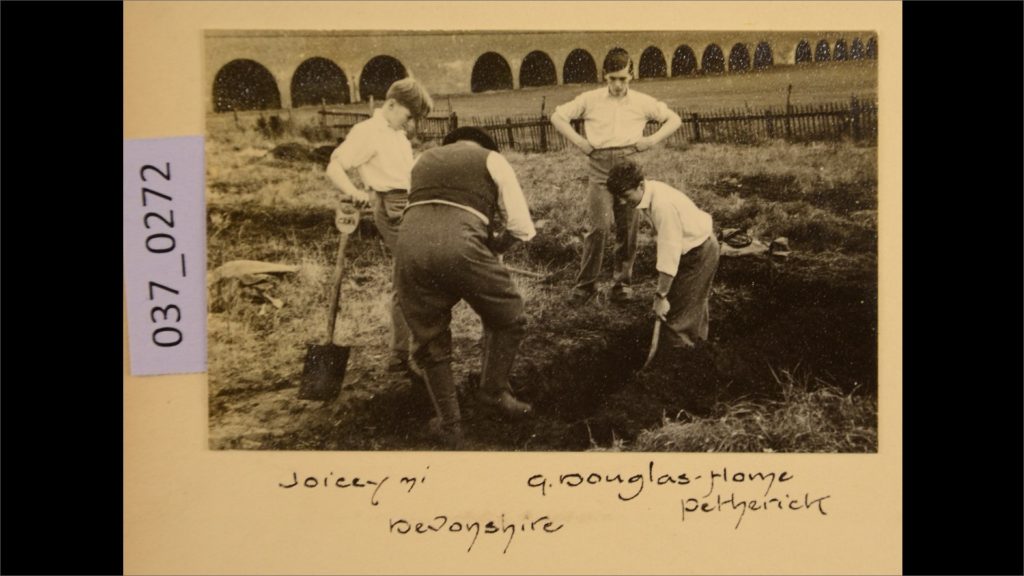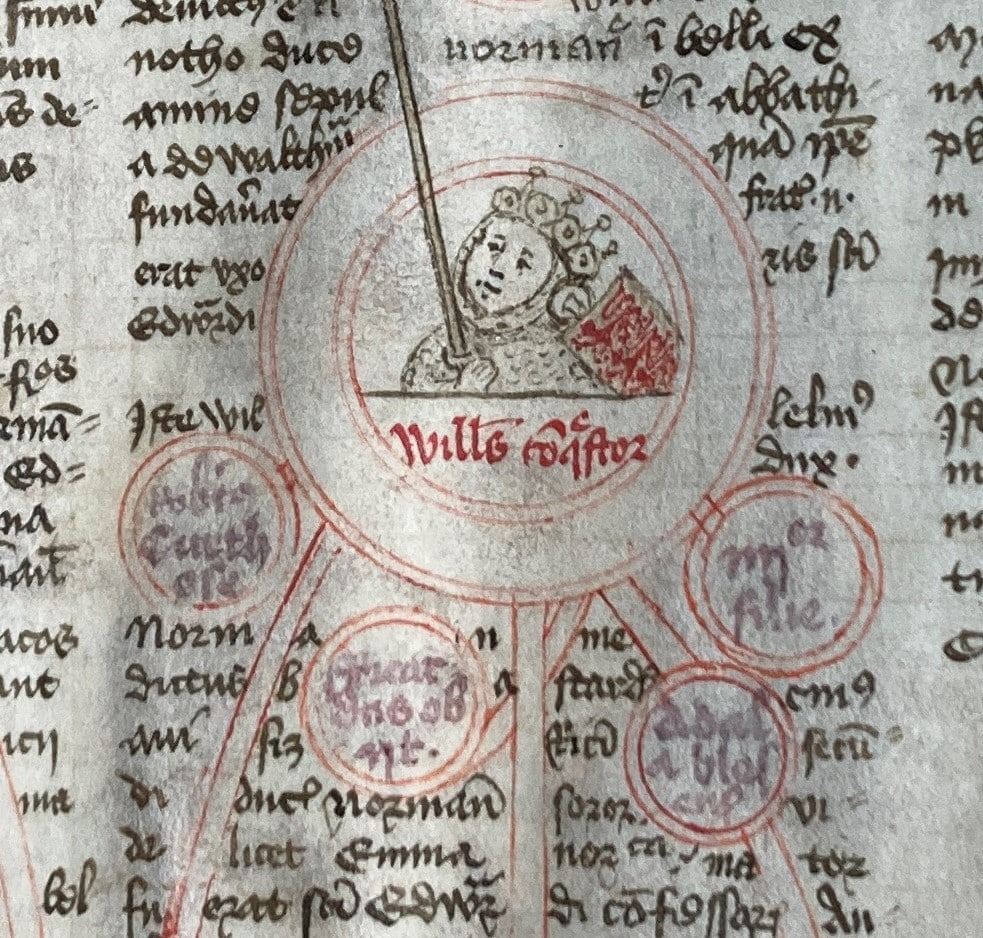A long-standing feature of the antechapel of Eton College Chapel, the imposing chivalric painting of Sir Galahad standing by his white horse, painted by George Frederic Watts (1817–1904), has temporarily left the College for the first time in over 60 years.[1] The painting has been loaned to the exhibition The Legend of King Arthur at Falmouth Art Gallery (17 June – 30 September 2023).

New research reveals that this work began as the earliest of two large-scale versions of the subject by Watts but was left unfinished. Watts later returned to it, following the determined correspondence of Henry Elford Luxmoore, an Eton master, who sought to secure a version of Sir Galahad for the College. The work arrived at Eton in time for the ‘Fourth of June’ celebrations in 1897.

Sir Galahad was first hung unframed near the choir stalls of the Chapel, held by metal brackets over an area of the south wall decorated with deeply ribbed stonework. It remained without a frame for some ten years, until an impressive Renaissance-style frame was commissioned by Old Etonian Anglican (later Catholic) priest and writer Robert Hugh Benson (1871–1914) and given to the College [2]. Benson used a frame maker located in Italy, who created a design based closely on the frame of a work by Venetian artist Paolo Veronese (1528–88): Madonna and Child with Saint Peter and a Female Saint (1555–60; Museo Civico di Palazzo Chiericati, Vicenza).
The exceptional frame of the Eton Sir Galahad is the sturdiest example in the College Collections, requiring four people to transport the work out of the Chapel. Its place in the antechapel has been taken by a work loaned from a private collection, The Hougoumont Crucifix (2019), by poet-painter Roger Wagner.

Hougoumont is the manor house of a farm, located at the centre of the battlefield of Waterloo. Here, a wooden crucifix hangs in a chapel within the house. During the battle of 1815, French artillery set fire to the building and the flames burned the feet of the sculpted figure of Christ, before dying away to leave the crucifix scorched but intact. This was considered by some to be evidence of a miracle, and the Pope declared that the site should become a place of pilgrimage.
Wagner’s painting responds to Victor Hugo’s account of visiting Hougoumont in 1861, when Hugo noted the graffitied names of previous visitors on the wall around the charred crucifix. The artist has also written a verse to accompany his painting, from which the following is an extract:
When Victor Hugo found the wall
On which the cross of Christ had burned
He saw graffitied on a wall
Thick screeds of names could be discerned,
Where scratched and inked around the cross
By tourists, pilgrims, grieving wives
Were signatures that signified
A wastage of six thousand lives [3]
While temporarily bereft of Watts’s compelling painting of Sir Galahad, those visiting and attending services at Eton College Chapel will now encounter Wagner’s befitting and poignant alternative.
Philippa Martin, Keeper of Fine and Decorative Art
[1] The intention to lend the painting to the Watts Gallery in Compton, Surrey, was reported in the minutes of a Provost and Fellows’ meeting of 3 October 1959 (Eton College Archives ref: COLL / P9 / 94 / 04 / 32)
[2] Letter to A. C. Ainger from R. H. Benson, 3 June 1907 (Eton College Archives, ref: COLL B5 / 03)
[3] Wagner, Roger, The Nearer You Stand: Poems and Images, Canterbury Press, 2019



